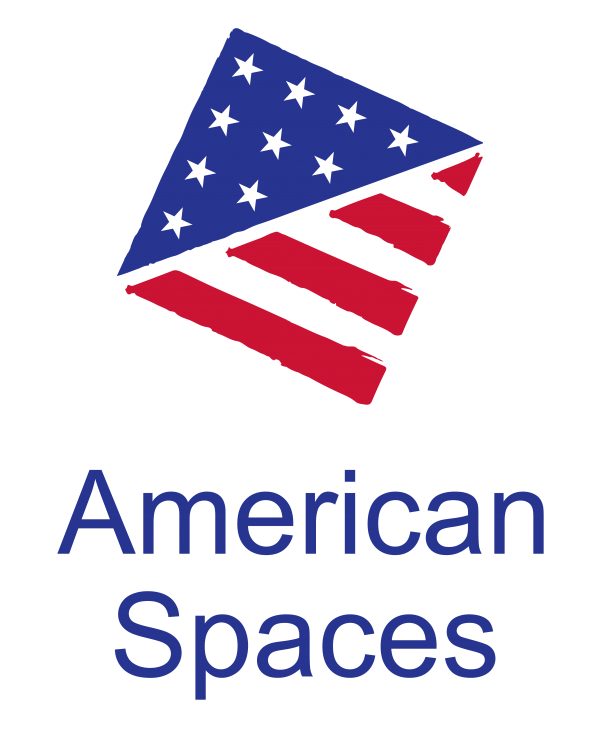HIGHER EDUCATION IN THE UNITED STATES
PROGRAM TOOLKIT FOR AMERICAN SPACES
This toolkit is designed for American Space coordinators or volunteers to teach high school students about U.S. educational opportunities and to connect students with EducationUSA advising centers or its Facebook page.

RESOURCES
- EducationUSA
A U.S. Department of State network of over 430 international student advising centers in more than 175 countries and territories.
- Department of Homeland Security page on studying in the United States
- USA.GOV home page on attending college in the United States
WHAT IS UNIQUE ABOUT THE AMERICAN HIGHER EDUCATION SYSTEM?
Lots of things! There are more than 3,900 accredited educational institutions across all 50 states. Many say that the quality and flexibility of the U.S. higher education system is why around a million foreign students are studying in the United States. There are also a wide range of financial options for hundreds of thousands of international students to help pay for their education each year.
FLEXIBILITY OF CHOICE
U.S. universities and colleges offer flexibility, meaning students may choose many of their courses. Prerequisites for a typical degree program will have both core courses and classes students select themselves called electives. Students in America also have the option to change their field of study during their education or transfer to another institution if they desire. Completing the first two years of a degree at one institution, usually a community college, and then moving to another, is very common. Students in the United States are able to select fields of study – called majors – and courses which match their interests.
TYPES OF HIGHER EDUCATION
Community College – A postsecondary institution that offers associate degree programs, as well as technical and vocational programs. Community colleges are two-year schools that provide affordable postsecondary education as a pathway to a four-year degree.
College – A postsecondary institution that provides an undergraduate education and, in some cases, master’s and doctorate degrees. College can also mean a division of a university; for example, College of Business.
University – A postsecondary institution that offers both undergraduate and graduate degree programs.
Types of Degrees
There are two-year associate degrees, the traditional four-year bachelor’s degree, a master’s degree, which requires at least one year of study beyond a bachelor’s degree, and a doctorate degree, which is the highest academic degree. Professions like doctors and lawyers require a post-bachelor professional degree.
Additional Discussion Questions
- How does the higher education system in your country compare to that of the United States?
- Do you think such a system should be centrally organized? Do professional degrees require a bachelor’s degree equivalent?
- Why do you think so many foreign students chose the United States to study?
- Why is flexibility in field of study and ability to change universities attractive?

ACTIVITY: HIGHER EDUCATION IN THE UNITED STATES
- Watch American College System Explained.
- Divide the audience into groups of 3 or 4 to discuss the questions below.
- Discuss the questions below as a large group.
- Do you know anyone studying in the United States? If so, where are they and what do they do?
- What are differences between universities, colleges, and community colleges?
- Why are U.S. universities attractive to foreign students?
- How is the degree system in the U.S. different from that of your own country?
ACTIVITY: DEBATE
What are the benefits of a flexible system of higher education?
- Show the EducationUSA video on switching a major (field of study): https://educationusa.state.gov/videos/us-higher-education-flexible
- Give the audience this statement: University students should have the right to switch majors as many times as they want.
- Ask an audience member to read the definition of the “major” from the vocabulary list.
- Divide the audience into two groups. (Tip: For larger groups consider having multiple debates at once.)
- Assign one group to argue for the resolution and assign the other group to argue against the resolution. Give them 5 minutes to brainstorm their arguments.
- Give each side 3 minutes to present their position.
- Give the groups 2 minutes to form a rebuttal statement. Repeat as needed.
VOCABULARY
- academic year: The period of formal instruction, which is usually September to May. It may be divided into terms of varying lengths, such as semesters, trimesters, or quarters.
- accreditation: Approval of colleges and universities by nationally recognized professional associations or regional accrediting bodies.
- associate degree: A degree awarded after a two-year period of study; it can be either terminal or transfer to another institution (the first two years of a bachelor’s degree).
- bachelor’s degree: A degree awarded upon completion of approximately four years of full-time study.
- campus: The land where the buildings of a college or university are located.
- core course: Courses that provide the foundation of the degree program and are required of all students seeking that degree.
- course: Regularly scheduled class sessions of one to five hours (or more) per week during a term. A degree program is made up of a specified number of required and elective courses and varies from institution to institution.
- degree: Diploma or title conferred by a college, university, or professional school upon completion of a prescribed program of studies.

- electives: Courses that may be chosen from any field of study. Electives give students an opportunity to explore other topics or subjects of interest.
- financial aid: A general term that includes all types of money, loans, and work/study programs offered to a student to help pay tuition, fees, and living expenses.
- higher education: Postsecondary education at colleges, universities, professional schools, technical institutes
- major: The student’s field of concentration. Major courses represent 25-50% of the total number of courses required to complete a degree. Most students pursue one major, but some pursue double majors.
- minor: A minor is a secondary area of specialization beyond a college major. College students do not have to declare a minor to graduate. Undergraduates may use minors to complement their major or explore a different discipline.
- master’s degree: Degree awarded upon completion of academic requirements that usually include a minimum of one year’s study beyond the bachelor’s degree.
- university: A postsecondary institution that offers both undergraduate and graduate degree programs.

The views expressed in these links and resources do not necessarily reflect those of the U.S. government.
Updated November 2025









